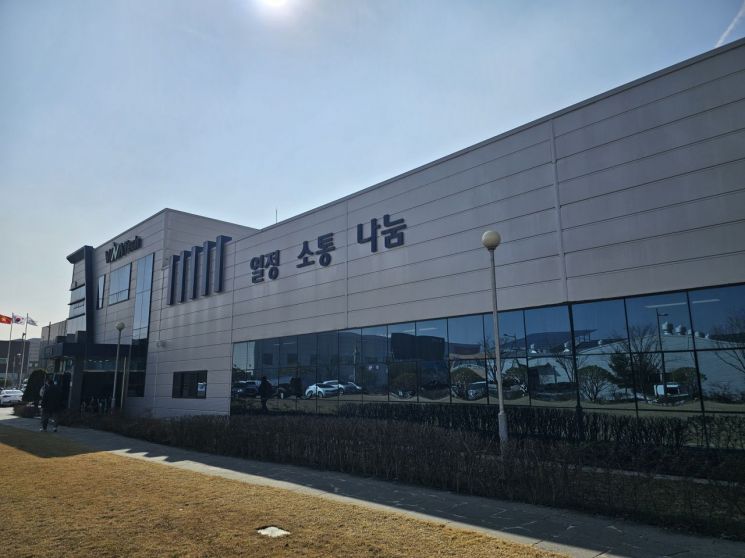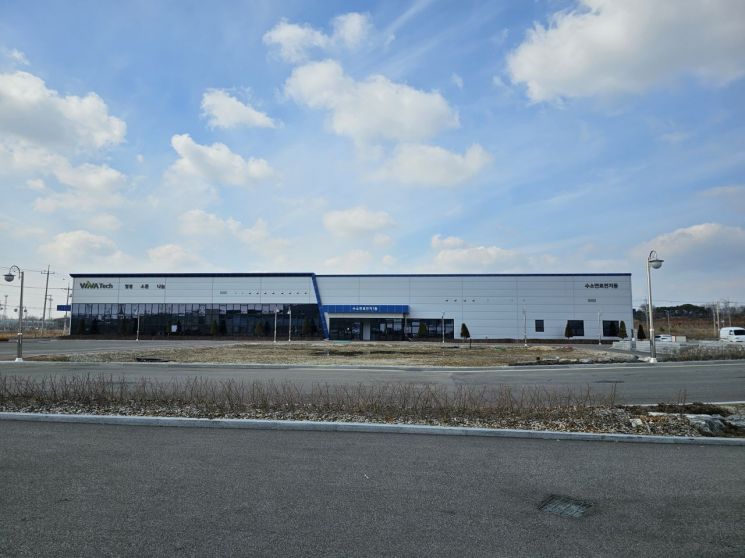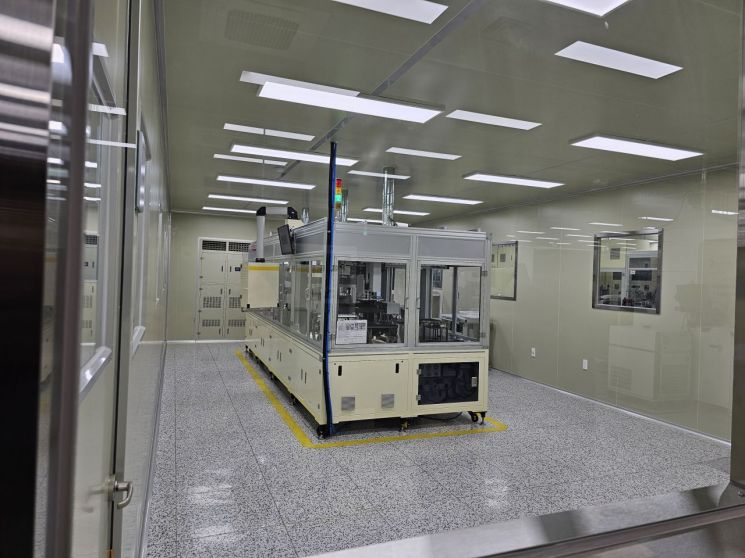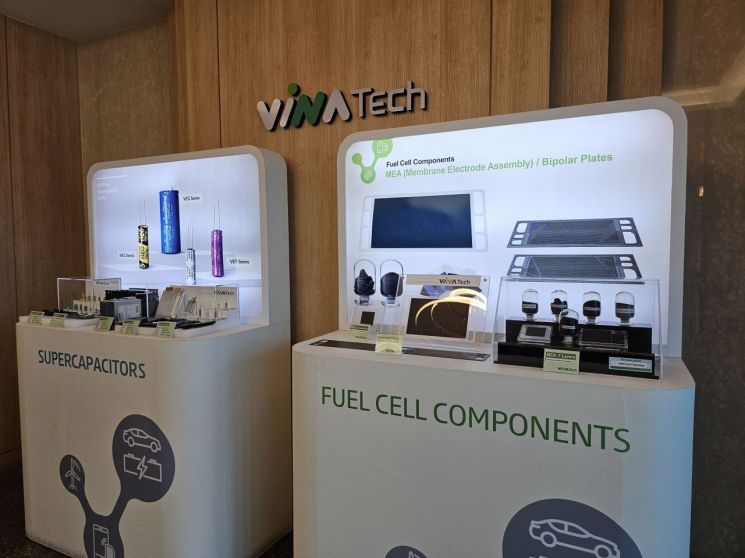[Corporate Exploration] Vinatech, a powerhouse in environmental and energy solutions, is confident in explosive growth
"This is a year to lay the groundwork for growth. Starting in the second half of next year, Vinatech could see explosive growth in 2026."

View of Vinatech headquarters in Jeonju.
CEO Sung Do-kyung, who met at Vinatech headquarters in Unam-ro, Deokjin-gu, Jeonju-si, Jeollabuk-do, was confident in the company's growth.
Vinatech was founded in 1999. After joining KONEX in 2013, it moved to KOSDAQ in 2020. It is a company that specializes in producing super capacitors, energy storage devices. Super capacitors are energy storage devices that store energy and instantly supply electric current when needed. At the same time, the company is expanding the hydrogen fuel cell sector as a new growth engine.
On Wednesday, he visited Vinatech factory in Wanju, North Jeolla Province, located in Bongdong-eup, Wanju-gun, North Jeolla Province. The plant will have four factory buildings. The total size is 17,725 pyeong.
Plant 1 is a hydrogen fuel cell building. It will produce membrane electrode assembly (MEA), which is considered one of the core elements of hydrogen batteries, as well as catalysts and supports. Plant 2 next door will produce medium and large pouch-type super capacitors and will be completed within the first half of this year. Construction of Plant 3 to build super capacitor modules will also begin within this year, while Plant 4 to build hydrogen fuel cell lines will be built before 2026.

View of the first factory building of Vinatech Wanju factory located in Wanju-gun, Jeollabuk-do Province
It entered the first plant that produces hydrogen fuel cell products. There are two entrances here. The left produces MEA, and the right produces support and catalyst. It was not allowed to enter the place where the support was made. It was followed by the explanation that only a small number of designated people could enter even within the company.
Currently, Plant 1 can produce a total of 1.3 million MEAs per month. It is 300,000 semi-automatic and 1 million automatic. In the future, facilities will be expanded according to the demand of the front industry. Some of the production facilities have been installed with screens. This is because it cannot be exposed because it has core processes and equipment.
Regarding the growth of hydrogen fuel cells, Jeong Han-ki, president of Vinatech hydrogen fuel cell division, was confident. "We will be able to sell 50,000 copies this year and 250,000 copies next year," Jeong said. "We don't have to worry because MEA demand is certain."
It was a different opinion from the recent concerns over a slowdown in the electric car market. "Electric cars are right for short distances, and hydrogen cars are right for long distances," he said. "Commercial cars have relatively constant routes, so there is less burden on charging stations and there is a clear demand in Europe." "Our products absorb demand like black holes because they have high performance and are attractive in terms of price," he added.

Part of the MEA production line inside Plant 1 of Vinatech Wanju Plant. MEA is being produced automatically.
After visiting the Wanju plant, he returned to the headquarters and met with CEO Sung Do-kyung. Regarding last year's performance, CEO Sung explained that he failed to make proper preparations. Last year, Vinatech recorded sales of 55 billion won and operating profit of 3.3 billion won. Compared to the previous year, it fell 22.21 percent and 65.14 percent, respectively. The volume of orders for remote controllers decreased and R&D costs increased. "We had to make other preparations to meet the decline in demand, but we couldn't," CEO Sung said. "I was a little disappointed as the company's representative."
However, it was expected to be different this year. Internally, the company expected it to surpass 2022 when it recorded 70 billion won in sales. First, it is expected that the existing supercapacitors will be revived and sales will come out of the new medium and large sizes. He explained, "There are a lot of new customers coming in for the existing small and medium-sized ones." In particular, there were expectations for the pouch type. CEO Sung predicted, "The number of samples for small and medium-sized supercapacitors including pouches is also continuing, and sales will be significant this year."
In particular, it is expected that demand will increase in the future as it recognizes that super capacitors are highly effective. "There is a part where it is unstable to simply use batteries, but customers now recognize that using super capacitors together can reduce fires and increase lifespan," he said. "Demand will continue to increase as we expect more uses in the future."

If you go inside the first plant of Vinatech Wanju plant, you can see the products produced by Vinatech. The left side is a super capacitor, and the right side is MEA and support.
The hydrogen fuel cell sector is expected to grow rapidly. Vinatech expects hydrogen fuel cells to hit a break-even point this year. Production is expected to double this year compared to last year. "The hydrogen fuel cell sector will generate significant sales this year," Vinatech said. "It will see explosive growth from the second half of next year."
Vinatech is currently discussing MEA supply contracts with global companies. The final decision will be made in the second half of next year. "If we confirm the contract next year, the volume of MEA production will increase significantly from 2027," he said. "The number of samples is still increasing, but if confirmed, sales will explode."
**Source : (https://www.asiae.co.kr/article/2024022716035997099)
